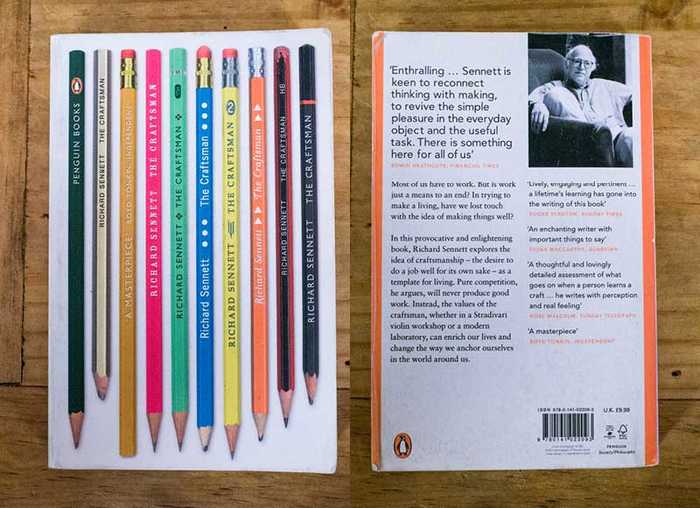The Craftsman - Richard Sennet
Een boek met heel veel inspirerende invalshoeken.
Allereerst over de werkplaats en autoriteit en autonomie:
‘The social history of craftsmanship is in large part a story of the efforts of workshops to face or duck issues of authority and autonomy.’
Over de hand, techniek en grip krijgen op de wereld schreef ik al eerder een blog. Dit zijn enkele zinnen van Sennett uit hoofdstuk vijf van zijn boek die me grijpen:
'The ethnologist Mary Marzke has usefully sorted out three basic ways we grip things. First, we can pinch small objects between the tip of the thumb and the side of the index finger. Second, we can cradle an object in the palm and then move it around with pushing and massaging actions between thumb and fingers. [...] Third is the cupping grip- as when a ball or biggish object is held by the rounded hand, thumb and index finger placed opposite the object -and is even more developed in our species. The cupping grip allows us to hold an object securely in one hand while we work on it with the other hand.'
'One of the myths that surround technique is that people who develop it to a high level must have unusual bodies to begin with, this is not quite true. For instance, the ability to move one's fingers very rapidly is lodged in all human bodies, in the pyramidal tract in the brain. All hands can be stretched out through training so that the thumb forms a right angle to the first finger.'
'To say that we "grasp something" implies physically that we reach for it. In the familiar physical gesture of grasping a glass, the hand will assume a rounded shape, suitable for cupping the glass, before it actually touches the surface. The body is ready to hold before it knows whether what will hold is freezing cold or boiling hot. The technical name for movements in which the body anticipates and acts in advance of sense data is prehension.'
Over omgaan met materiële weerstand, problemen framen en geduldige oefening:
